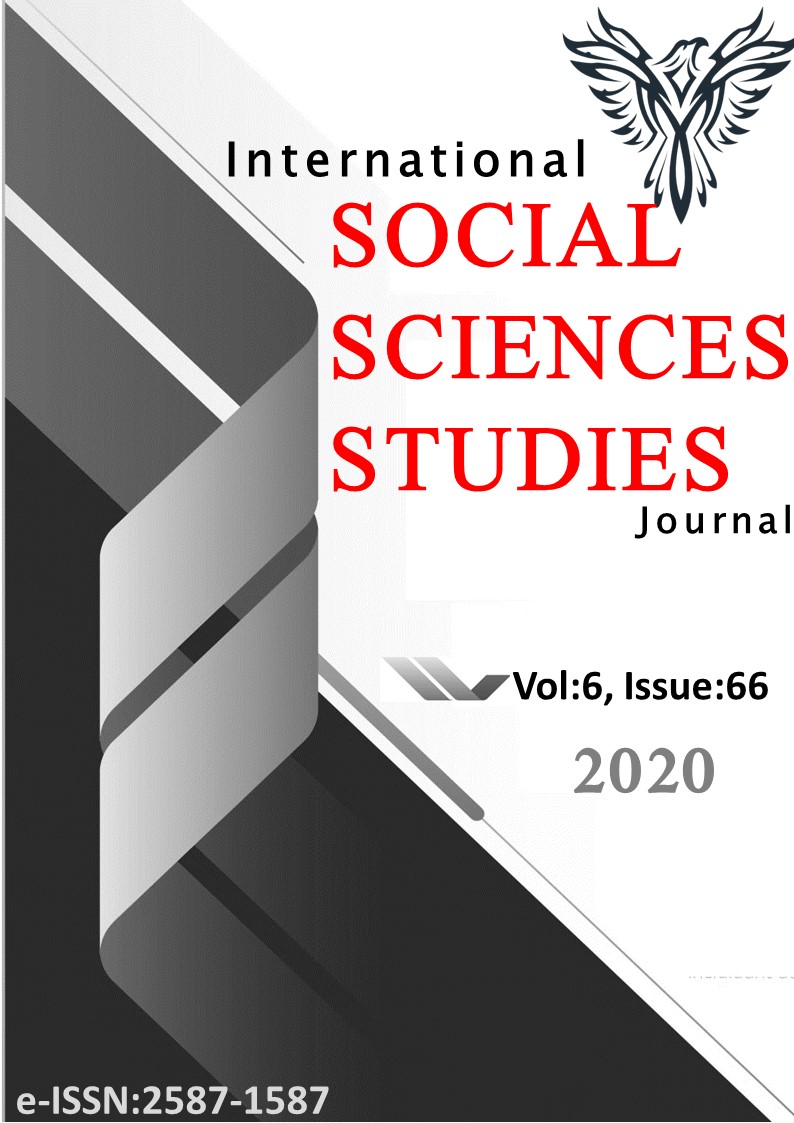Author :
Abstract
Özbağ, Kırşehir'in merkez ilçesine bağlı, Ankara-Kayseri Karayolu üzerinde, kent merkezine 8 km uzaklıkta bir kasabadır. Kırşehir ili Özbağ halıları, tarihsel bir süreçte gelişen, köklü bir dokumacılık altyapısının bulunduğu toprakların, somut olmayan kültürel mirasıdır. Özbağ halıları dokunduğu desenin adıyla anılmaktadır. Yörede geleneksel olarak dokunan halı desenlerinden biri de bu çalışmanın konusunu oluşturan Türkocağı desenli Özbağ halılarıdır. Özbağ’da halıcılık 17. yüzyıldan itibaren gelişmeye başlamıştır. Türkocağı desenli halılar 20. yüzyılda ortaya çıkmış, yöreye özgü nitelikler kazandırılmaya çalışılmıştır. Türkiye’nin en eski ve büyük sivil toplum kuruluşu olan Türk Ocakları tarafından, 1925-1927 yılları arasında, Kırşehir şubesinde, halı dokumacılığı kursları açılmıştır. Halı desenleri bu kurslarda tasarlanarak ilk kez Türkocağı deseni adı ile dokutturulmuştur. Türkocağı topu günümüzde Özbağ’da çok bilinen bir desen adıdır. Çalışmanın amacı, Özbağ kasabasında eskiden dokumacılığı yapılan ve günümüzde sadece kullanılan ya da eski örneklerde kalmış olan Türkocağı desenli Özbağ halılarının özgün renk, desen, motif özellikleri ile teknolojik özelliklerini belirlemektir. Çalışma daha önce Özbağ halılarının makale bütünlüğünde ele alınmamış ve incelenmemiş olması açısından özgün değere sahiptir. Yörede Türkocağı desenli 16 adet halı bulunmuş ve makale kapsamında bunlardan 5’i incelenmiştir. Sonuç olarak kendine özgü teknik özellikleri bulunan halılar, düğüm sayısı açısından ince kaliteli halı sınıfına girmektedir. Renk sayıları 12 ile 19 arasında değişmektedir. Tek toplu ve üç toplu halılar namazlağa, duvar veya sedir halısı olarak dokunmaktadır. Halılar ayak, sandık, kenar suyu ve top adlı bölümlerden oluşmaktadır. Türkocağı adlı desen düzenleyimi bitkisel motiflerden meydana gelmektedir. Halı desenlerinde kullanılan motifler klasik Türk tezyini sanatlarında kullanılan motiflerdir.
Keywords
Abstract
Özbağ is a town in the central district of Kırşehir, on the Ankara-Kayseri Highway, 8 km away from the city center. Kırşehir province Özbağ carpets are the intangible cultural heritage of the lands that have developed in a historical process and have a deep-rooted weaving infrastructure. Özbağ carpets are known by the name of the pattern it weaves. One of the traditionally woven carpet patterns in the region is the Özbağ carpets with Türkocağı pattern, which are the subject of this study. Carpet weaving started to develop in Özbağ since the 17th century. Türkocağı patterned carpets appeared in the 20th century and it was tried to gain local characteristics. Carpet weaving courses were opened by Kirsehir branch of Türk Ocakları that Turkey's oldest and largest non-governmental organization, between the years 1925-1927. Carpet patterns were designed in these courses and weaved for the first time under the name of Türkocağı pattern. The medallion called Türkocağı is a pattern name that is well known in Özbağ today. The aim of the study is to determine the original color, pattern, motif features and technological properties of the Turkocagi patterned Özbağ carpets, which were formerly weaved in Özbağ town and used only today or remained in old samples. The study has a unique value in terms of the fact that Özbağ carpets have not been handled and examined in the integrity of the article. In the region, 16 carpets with Türkocağı pattern were found and 5 of them were examined within the scope of the article. As a result, carpets that have their own technical characteristics are classified as fine quality carpets in terms of number of knots. Color numbers range from 12 to 19. Single and triple carpets are woven into prayer as wall or cedar carpets. The carpets are made up of sections named foot, chest, edge water and ball. The pattern composition called Türkocağı consists of floral motifs. The motifs used in carpet patterns are the motifs used in classical Turkish decoration arts.





